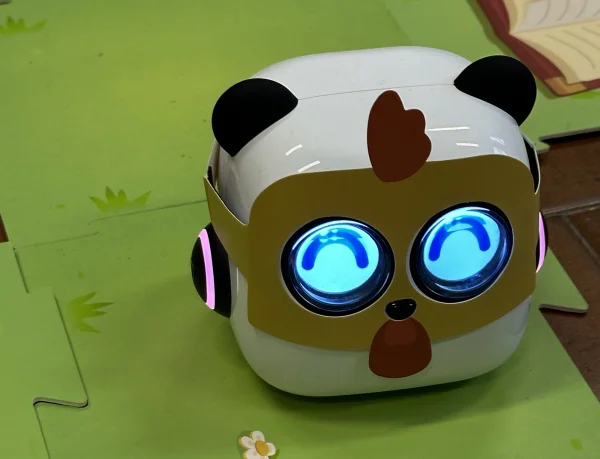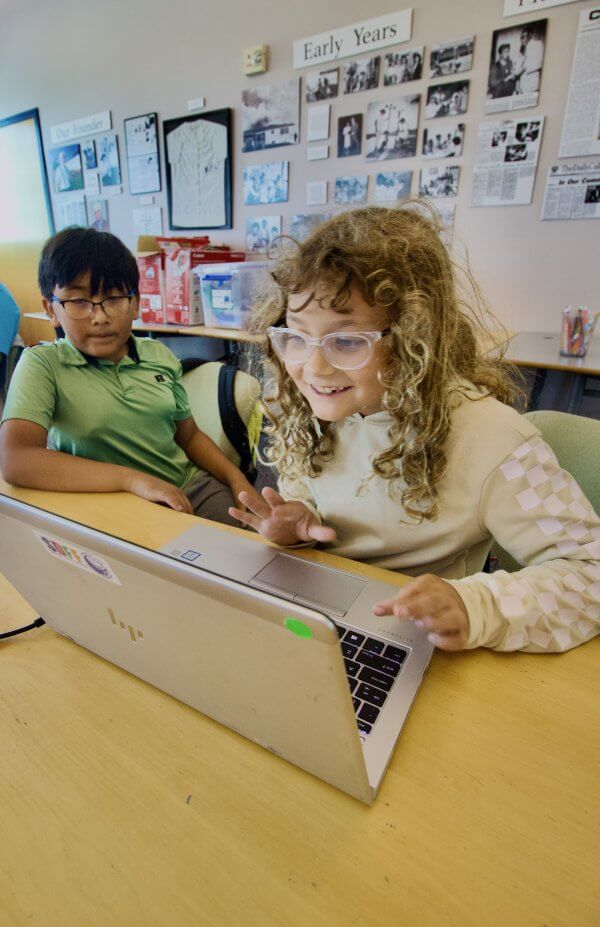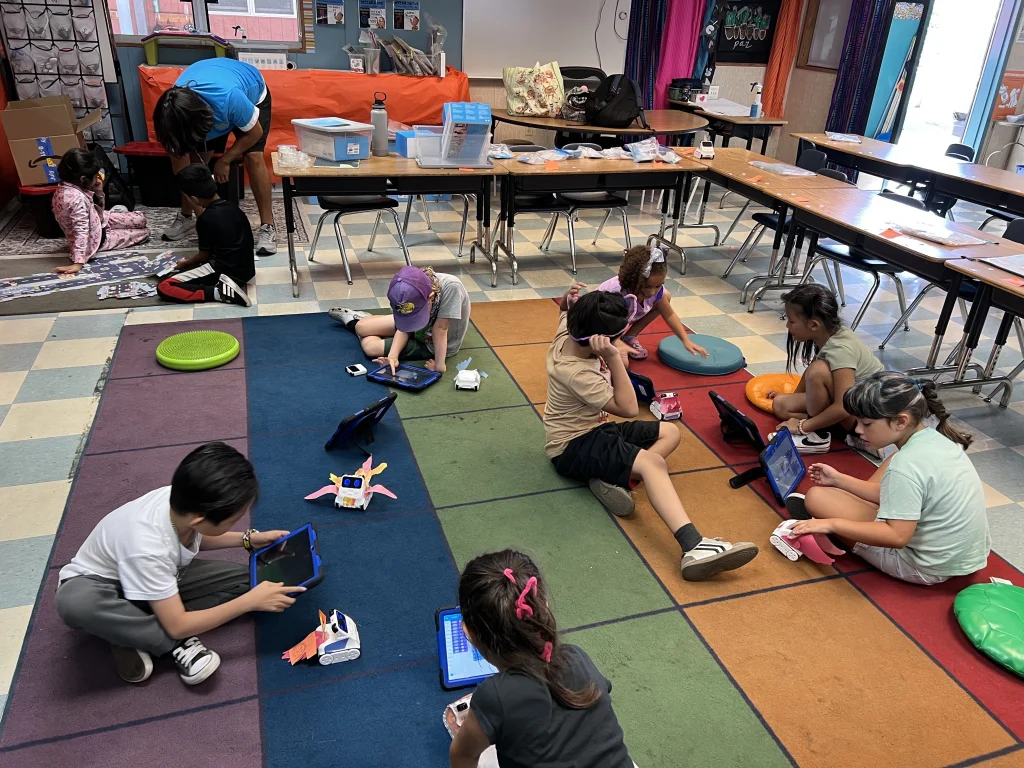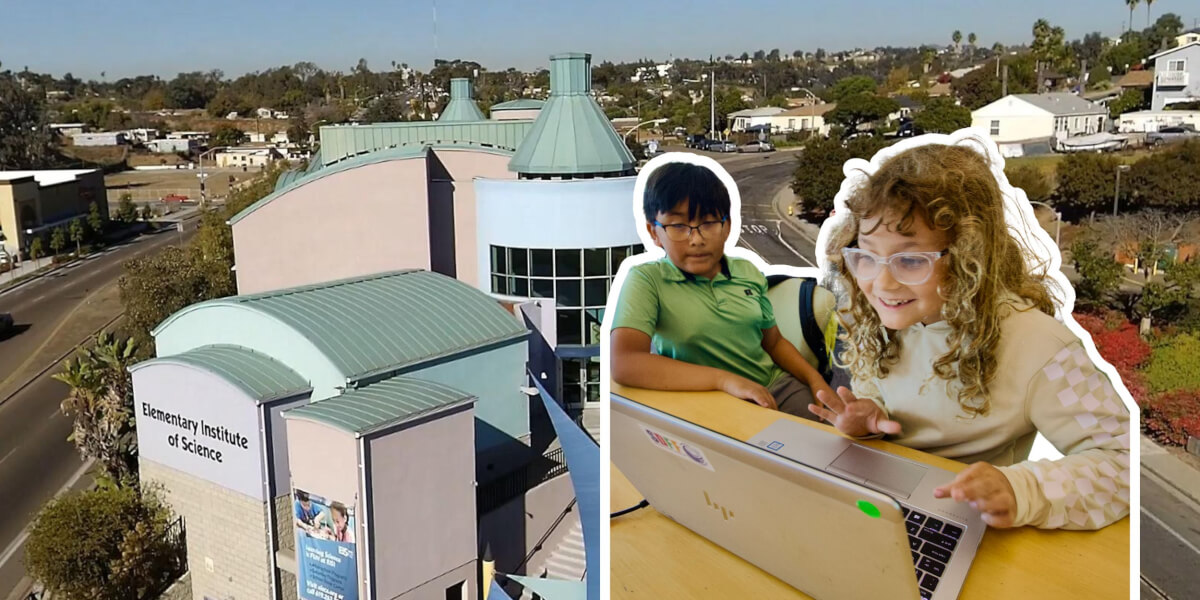In just two weeks, elementary students from San Diego’s Hoover Cluster coded robots, explored Mars, and learned real-world problem-solving skills—many for the first time. The STEM for young innovators program quickly became a student favorite.
Thanks to a partnership between the Elementary Institute of Science (EIS) and EdforTech, including other STEM education providers, Summer in the Heights 2025 delivered an innovative model for summer learning that blended accessibility, engagement, and long-term impact.
With support from philanthropies, this grant-funded initiative was focused on underserved students from the San Diego City Heights community. EdforTech was thrilled to provide robotics programming that sparked curiosity and built STEM confidence.
A STEM Summer Program That Builds Momentum
The Summer in the Heights two-week program brought hands-on STEM learning to 120 elementary students from San Diego’s City Heights community. The camp served students in grades 1-5.
As the Student Art and Special Projects Manager, Genevieve Flores focused on access to STEM and coordinated multiple partner organizations to deliver cohesive programming that engaged students transitioning from academic-recovery focused mornings.
Other leaders at EIS who were instrumental in making this program a success include Sarah Cooper the Executive Director; Baltazar Perez, Director of Innovation & Partnerships; and John Ortiz, Digital and Community Programs Coordinator.
Designed with access and exploration in mind, EIS structured the program into two progressive phases:
- Phase 1: STEM and creative learning brought directly to Rosa Parks Elementary
- Phase 2: Hands-on experiences at EIS’s campus, featuring labs, trails, and innovation spaces that emphasized fun and self-expression
This phased approach gave students a gradual and supportive entry into deeper learning experiences—especially valuable for younger learners or those new to STEM.
EdTech Summer Camp: Robotics, Discovery, and Joy
As one of EIS’s key partners, EdforTech delivered daily robotics lessons to two afternoon cohorts during Phase 2 of the program.
We designed our sessions to complement a full academic morning—infusing fun, creativity, collaboration, and exploration into every activity.
For Grades 1–2: Screen-Free Coding with mTiny
Younger students worked with mTiny, a screen-free robot ideal for early learners. Through storytelling and movement-based activities, students practiced sequencing, logic, and directional thinking—all while developing communication and teamwork skills.

The kids lit up when they saw mTiny. It’s a tool that speaks their language, curiosity and joy.
For Grades 3–5: Mission to Mars with Codey Rocky
Older students participated in a themed robotics challenge—Mission to Mars—where they coded Codey Rocky robots to navigate “Martian” terrain. Alongside foundational programming concepts like loops and conditions, students explored planetary science, problem-solving, and algorithmic thinking.
The program integrated storytelling, teamwork, and scientific discovery into each activity.

You could see the moment they made the connection between the code and what the robot did—it was pure excitement.
Measurable Results and Sustainable Impact
- 120 students in grades 1-5 served across the entire camp
- 30 students participated in EdforTech’s robotics cohort
- Two EIS instructors received professional development from EdforTech
- An EdforTech-certified instructor delivered lessons, with an EIS-provided classroom assistant
- EdforTech provided two curricula aligned with San Diego Unified’s STEM enrichment goals, and NGSS science standards
- All robotics kits and curriculum materials remain with EIS for future use
Because the robots and class materials stay behind, EIS now has the tools to continue robotics programming during the school year—making this summer more than just a one-time opportunity. They have trained staff who can continue to deliver this program for several years.
“Great structured lesson plans. All your questions will be answered by the end [of the EdforTech teacher workshop]” Milena, EIS Teaching Assistant for mTiny
A Model of Coding for Elementary Students
Summer in the Heights is a model of what’s possible when community-based programming meets high-quality STEM instruction. It proves that with the right partners, underserved students can gain access to engaging, standards-aligned STEM learning—even in out-of-school-time settings.
EdforTech is proud to have been a part of Summer in the Heights 2025, and to be included along with EIS’s other community programs. With robotics, coding, creativity, and community, we helped bring learning to life for young minds.

To every student who programmed a rover, navigated an obstacle, or asked “what if?”—you’re the future of innovation.
To learn more about EIS and their extensive youth programs, visit their website Elementary Institute of Science (EIS) (also see the FAQs below).
Bring STEM Learning to Your Schools or Community
If you’re planning summer learning or after-school programs and want to integrate hands-on STEM that students love, our team of STEM experts are here to support you.
Non-profit organizations: Looking to fund STEM programs in underserved schools? We can connect you with partner schools seeking support.
- We offer:
- Proven, scalable standards-aligned curriculum
- Instructor training and classroom support
- Robots that last for several years to support your programs
Bring meaningful STEM learning to your students. Contact EdforTech to learn more.
Need a partner for your next STEM grant? Let’s turn your idea into a funded project.
FAQs about Elementary Institute of Science (EIS)
The Elementary Institute of Science (EIS) is a San Diego–based nonprofit organization dedicated to inspiring young people to explore science, technology, engineering, and mathematics (STEM) through hands-on learning experiences. Founded in 1964, EIS provides developmentally appropriate programs that combine creativity, discovery, and real-world application.
EIS programs emphasize small class sizes (maximum 12:1 student–instructor ratio), hands-on learning, and real-world STEM applications. Students not only gain academic skills but also build confidence, teamwork, and problem-solving abilities—skills that last a lifetime.
EIS offers programs for students from grades 2 through 12:
Grades 2–8: Camps during school breaks (Thanksgiving, Spring, and Summer)
Ages 8–13: After School and Saturday Programs (Science & Art Academy, Robotics Academy)
Middle & High School Girls: FIRE and Girls Take Flight
High School Students: Teen STEAM Café and Lab Assistant volunteer program
EIS provides a continuum of programs designed to grow with students as they advance:
– After School & Saturday Programs – Weekly hands-on STEM courses in science, art, and robotics.
– Camps – Multi-day themed camps with lab rotations, field trips, and guest STEM professionals.
– FIRE (Future Innovators in Robotics & Engineering) – Engineering and tech camps for middle school girls.
– Girls Take Flight – Drone-building and FAA certification program for high school girls.
– Teen STEAM Café – Free enrichment for high school students exploring real-world issues and sustainability through STEM.
– Lab Assistants Program – Volunteer leadership opportunity for high school students.
EIS runs dedicated initiatives for girls, including the FIRE and Girls Take Flight programs, which are led by female coaches and mentors. These programs combine engineering, robotics, and drone technology to help girls gain hands-on experience, mentorship, and exposure to STEM career pathways.
Yes. Limited scholarships are available for certain programs. Eligibility details and application requirements are included on the program registration forms.
Students participate in interactive lab rotations, engage in team projects, and often attend guest presentations by local STEM professionals. Camps and classes balance creativity and structure—students might build robots, code drones, experiment with chemistry, or design 3D-printed objects, depending on the session theme.
Classes are taught by experienced STEM instructors and mentors who are passionate about science education. High school and college volunteers (Lab Assistants) often support instructors, helping to create a near-peer learning environment.
EIS is located in San Diego, California, serving students from throughout the region. Many programs are held at the main EIS campus, with some field trips and special events hosted at partner institutions, universities, and industry sites.
Families can register directly on the EIS website under the Programs section. Each program lists registration dates, eligibility requirements, and tuition information.
EIS welcomes partnerships, donations, and sponsorships to expand access to STEM education. Organizations such as Bristol Myers Squibb have already contributed to supporting Saturday Science programming. Interested partners can learn more at eisca.org/donate.
For over 60 years, EIS has empowered thousands of San Diego youth—especially those from underrepresented communities—to pursue STEM learning and careers. Many alumni continue into STEM high schools, college programs, and professional careers in engineering, healthcare, and technology.
(This article was generated as a collaborative effort between the human author, Linda Nichols-Plowman, CEO of EDforTech and the AI assistants, Chat GPT 5 and Claude Sonet).

